Walk along the Piazza di Grotta Pinta. It’s a small horseshoe curved street off the via dei Chiavari near the Campo dei Fiori, one of Rome’s great marketplaces.
The curve of the Piazza might seem out of place in the midst of the linear streets and urban grid but it’s not out of place at all.
Modern Rome is built over ancient Rome and directly below the Piazza di Grotta Pinta is the inner wall of the Theater of Pompey, the largest theater ever built in the ancient city.
On September 29, 61 BC, Gnaeus Pompey Magnus celebrated his 45th birthday to a cheering crowd as he was hailed through the streets in this 3rd Triumph parade of his illustrious career. Pompey had just returned from successful conquests in Syria, Turkey and Crete, extending Rome’s borders to the Black Sea. The celebration in Rome lasted 2 days and before it ended, Pompey promised the citizens of Rome he would build the greatest Theatre in the world for their enjoyment.
The Senate was not amused. They were getting a bit jealous of Pompey’s celebrity and a little concerned over his many promises. They were also adhering to the law of the land that no permanent stone theater would be allowed in Rome. The Senate’s moral guidance felt there were already too many small wooden theaters degenerating the moral turpitude Roman citizens, but Pompey was as shrewd a diplomat as he was a great General.
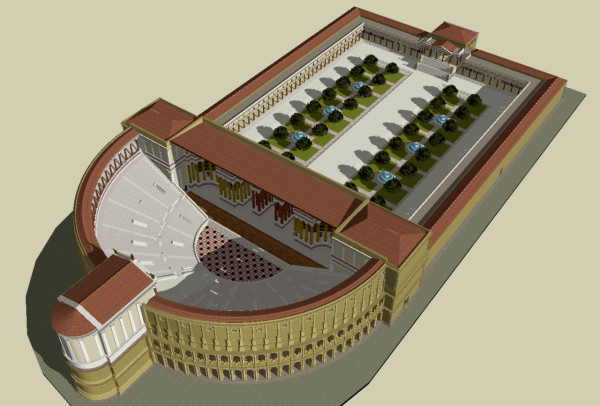 His theater, he explained, was actually a gift to his patron goddess, Venus Victrix (Victorious Venus) who had made Rome victorious. He was repaying his patron goddess with this theater complex. All performances inside would be dedicated to her protection and glory of Rome.
His theater, he explained, was actually a gift to his patron goddess, Venus Victrix (Victorious Venus) who had made Rome victorious. He was repaying his patron goddess with this theater complex. All performances inside would be dedicated to her protection and glory of Rome.
Not only was the theater dedicated to Venus Victrix, Pompey included a large Temple, a focal point looking down over the Theater complex.
The Senate could not refuse. No one would dare insult a god.
Pompey’s Theater complex took 7 years to build. When it was finished the horseshoe (cavea) theater walls soared 115’ high, the width stretched to 500’ and it could hold 17,500 people. Behind the 95’ wide stage were long porticos filled with statues of the great artists of the day and inside the porticos were gardens, fountains and public space for meditative walks.
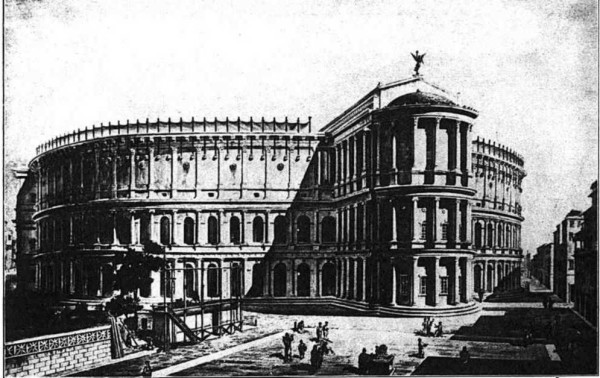 Behind the girth of the theater sat the Temple of Venus Victrix. It almost looks as an afterthought, a bump on the curve.
Behind the girth of the theater sat the Temple of Venus Victrix. It almost looks as an afterthought, a bump on the curve.
There are still remains of the Temple walls at one end of the Campo dei Fiori, where the via del Biscione and the via dei Gubbonari flow into the square.
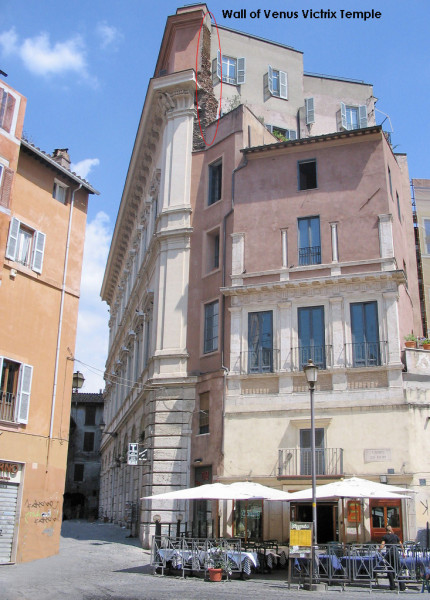 If you stand in the Campo dei Fiori and face the Cinema Farnese, look up to the left of the Cinema and you’ll see some exposed bricks at the top of what is now the Palazzo Orsini Pio Righetti.
If you stand in the Campo dei Fiori and face the Cinema Farnese, look up to the left of the Cinema and you’ll see some exposed bricks at the top of what is now the Palazzo Orsini Pio Righetti.
In the 12th century, the Orsini family used the structure of the Theater and Temple walls for one of their massive city Palazzo/Fortresses. The Orsini also rebuilt the Teatro Marcello as a fortress Palazzo.
The bricks you’re looking at are the Temple of Venus Victrix. It’s the only party you can see. The rest is buried behind the walls of the 15th century buildings that once comprised the Orsini Fortress.
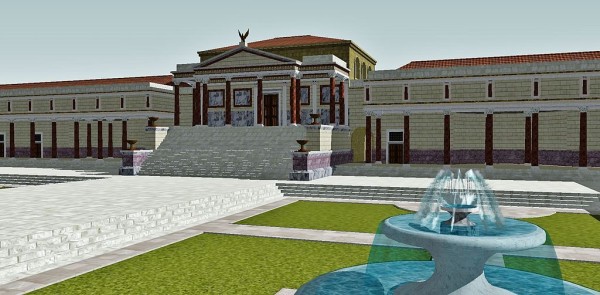 At the other end of the Pompey’s Theater complex, beyond the portico walk was the Curia Pompeiana, the temporary home of the Rome Senate.
At the other end of the Pompey’s Theater complex, beyond the portico walk was the Curia Pompeiana, the temporary home of the Rome Senate.
In 53 BC, the Senate House (Curia) in the Forum burned to the ground when the supporters of the infamous hedonist senator, Clodius Pulcher, lit a funeral pyre inside the building after Clodius was killed by a political gang of thugs led by Titus Milo.
While reparations were being made in the Forum, the Senate convened in the Curia Pompeiana. It was here, on March 15th 44BC, while on his way to the Curia Pompeiana , Julius Caesar was assassinated. Supposedly he died clutching onto the statue of Pompey that stood outside the Curia entrance.
The site of the murder sits under the Teatro Argentina, an 18th century Opera house that overlooks the Largo di Torre Argentina, an ancient home of 4 temples currently being reconstruction and current home of Rome’s stray cat population, although the city has been trying to remove the cats for years.
The Torre Argentina, one of the medieval feudal towers of Rome was demolished in 1909, after the Italian Unification. In 1927, during the Mussolini reconstruction of Rome, the head and arms of a large marble statue were discovered by the ruins of the Torre and the Largo Argentina was excavated. Much of what was discovered ended up in the Centrale Montemartini Museum, a great mixture of 20th century electric power machinery and ancient Roman statues.
Pompey’s Theater complex was restored several times during Imperial Rome and was still in use when Theodoric the Great ruled the city in the 5th century.
Actually, the theater survived into 10th century before it was dismantled and used for building materials.
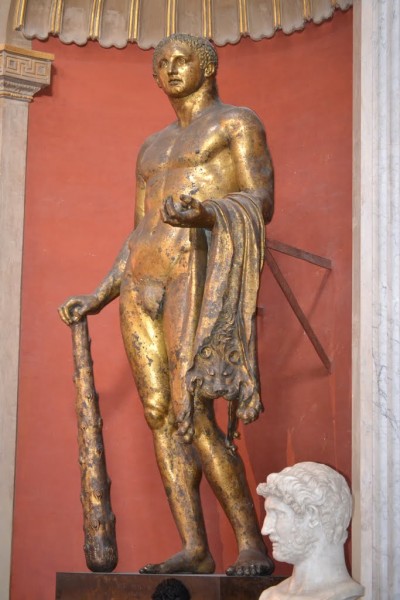
Some of the statues are still in Rome. Others have move away.
The giant gilded bronze statue of Hercules that once stood inside the Theater is now in the Sala Rotonda of the Vatican Museums.
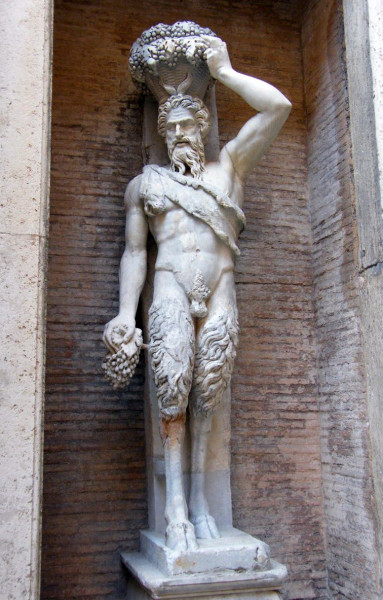 Two statues of Satyrs with horns were once used as ‘telamons’ (architectural supports of overhead beams) in Pompey’s Theater.
Two statues of Satyrs with horns were once used as ‘telamons’ (architectural supports of overhead beams) in Pompey’s Theater.
They now sit in the niches on either side of one of the Talking Statues of Rome known as ‘Marforio’ in the courtyard of the Palazzo Nuovo building of the Capitoline Museum.
Another one of the Talking Statues of Rome, The Abate Luigi (a roman dressed in a toga) was found in the ruins of Pompey’s Theater.
Pompey decorated the porticos with statues of the famous artist and actors of the time and it is possible that the Abate Luigi (named for the Abbot of the Sudario church where he stood for many years) was one of these artists.
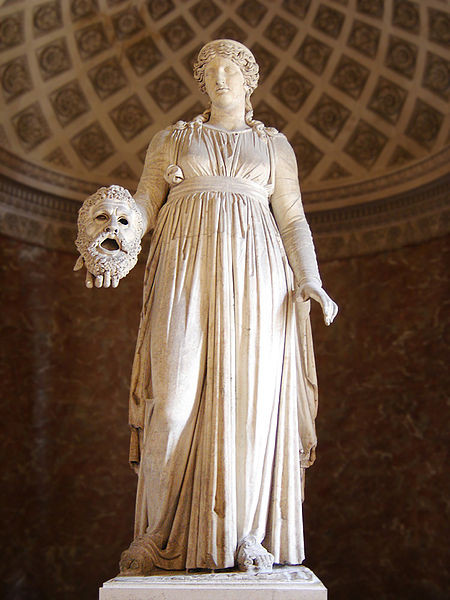 The 12’ tall Muse Melpomene in the Louvre Museum of Paris once decorated Pompey’s Theater. Melpomene, the Muse of Greek Tragedy, was taken from the Vatican Museum in 1803 by Napoleon.
The 12’ tall Muse Melpomene in the Louvre Museum of Paris once decorated Pompey’s Theater. Melpomene, the Muse of Greek Tragedy, was taken from the Vatican Museum in 1803 by Napoleon.
France was allowed to keep it in exchange for the return of the ‘Laocoön’ after the defeat of Napoleon and most of the Vatican Art was restored to Rome.
The mask she is holding is new, added around 1815.
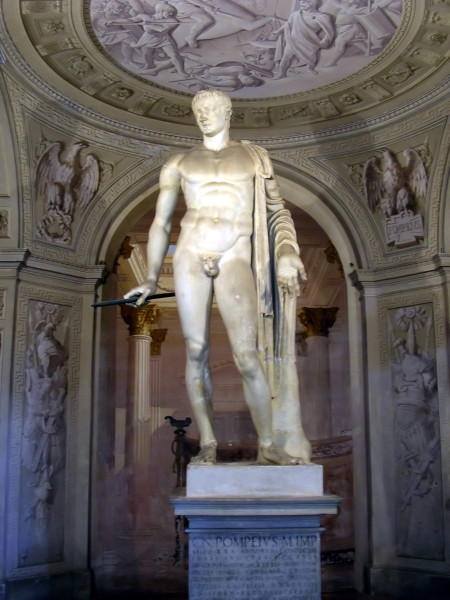 The statue of Pompey, supposedly the same statue where Julius Caesar died, is now in the Villa Arconati in Castellazzo di Bollate about 5km north of Milan.
The statue of Pompey, supposedly the same statue where Julius Caesar died, is now in the Villa Arconati in Castellazzo di Bollate about 5km north of Milan.
If you look around Rome’s Campo dei Fiori you can still find the remains of the once great Theatre of Pompey.
The 15th century Palazzo della Cancellaria (the Papal Chancellery) in the Piazza della Cancelleria near Campo dei Fiori was the first Renaissance style palace constructed in Rome.
The exterior of the Palazzo was built from the bone colored travertine marble from Pompey’s Theater.
The 44 Egyptian granite columns in the courtyard of the Cancelleria also came from the upper levels of the Theater cavea (horseshoe).
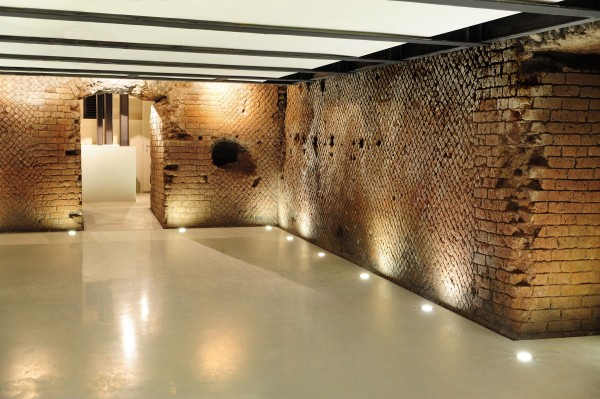 The 4* Hotel Lunetta on Piazza del Paradiso (at the end of via del Biscione) went through a 3 year restoration/renovation from 2008-2011 and when they reopened, they revealed the walls from the lower level of the exterior theater cavea.
The 4* Hotel Lunetta on Piazza del Paradiso (at the end of via del Biscione) went through a 3 year restoration/renovation from 2008-2011 and when they reopened, they revealed the walls from the lower level of the exterior theater cavea.
The engineering is amazing. The Superintendent of Archeology in Rome would not allow any structure to attach to the ancient walls and so the Hotel Lunetta suspended a ceiling over the theater walls and attached it to the upper levels of the hotel.
The Theater under the Hotel Lunetta is now a tranquil post spa relaxation area.
The Lunetta is the second oldest hotel in Rome and goes back to 1368 when it was the Albergo della Roma. The beautiful restoration/renovation includes 30 rooms and a beautiful rooftop bar overlooking the city and the Piazza Paradiso.
The oldest hotel in Rome is the 2* Albergo del Sole al Biscione which follow the curve of the theatre cavea around the via del Biscione.
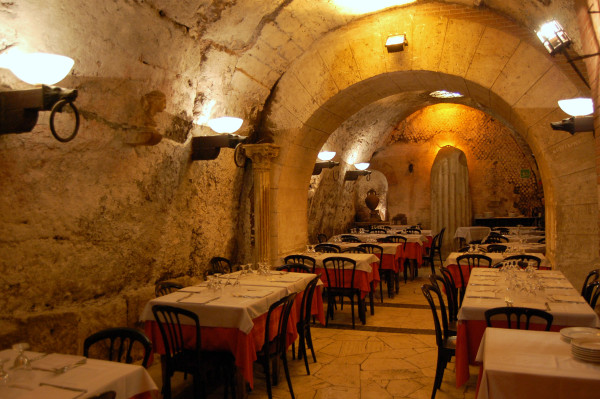 Other locations to see the ancient walls of the once famous theater are in Ristorante da Pancrazio, where you can dine in the ruins of the ancient theatre or Costanza’s, also built into the outer ring of the cavea of the theater.
Other locations to see the ancient walls of the once famous theater are in Ristorante da Pancrazio, where you can dine in the ruins of the ancient theatre or Costanza’s, also built into the outer ring of the cavea of the theater.
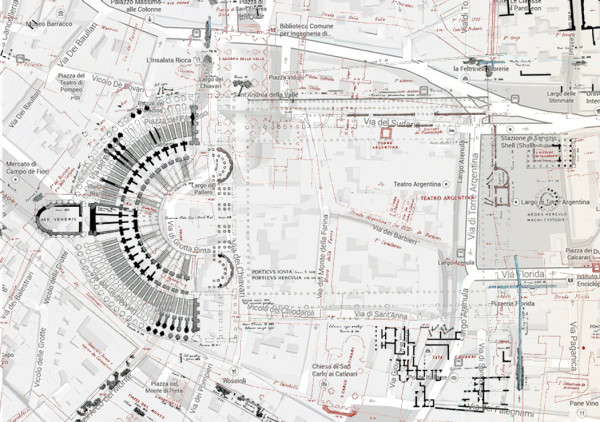
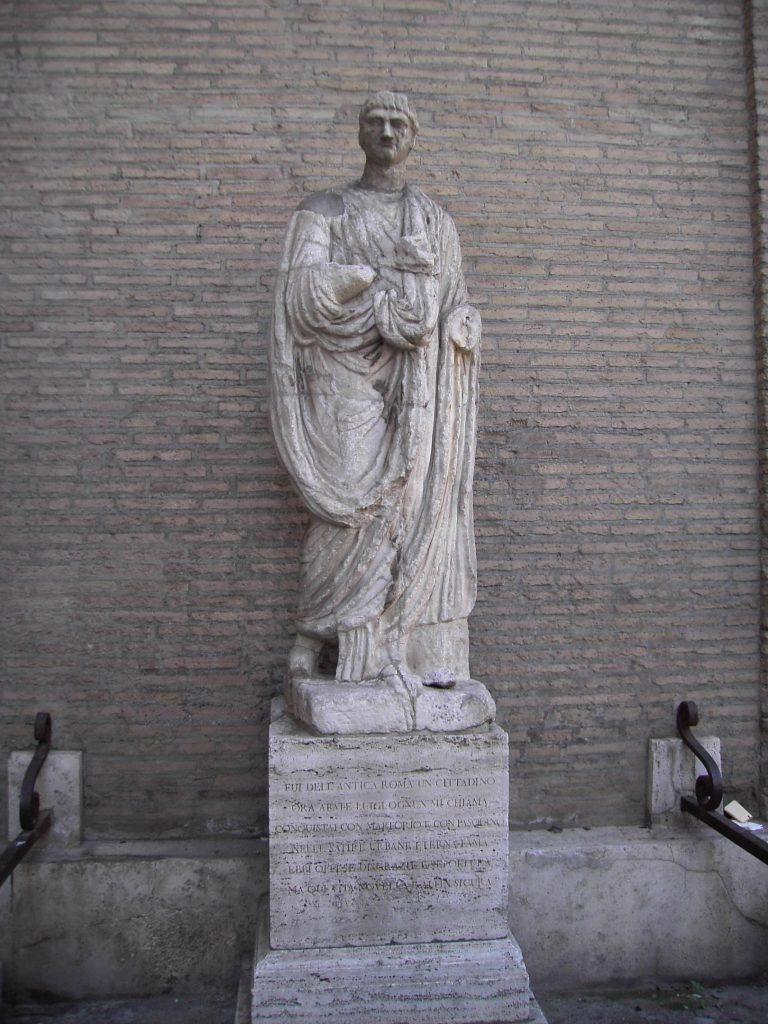
You must be logged in to post a comment.